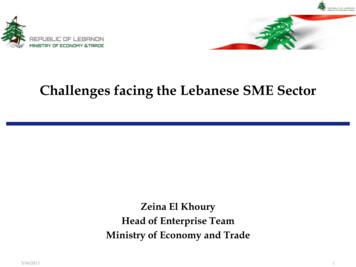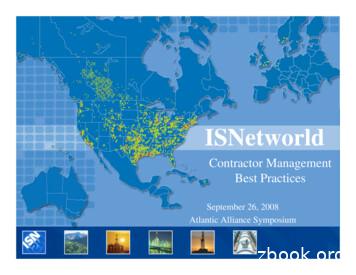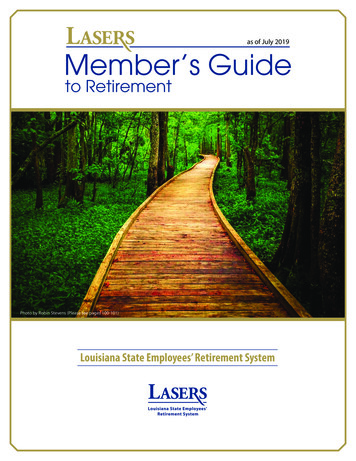4 Reasons Employees Need Better Legal Benefits Now - Rocket Lawyer
4 Reasons Employees Need Better Legal Benefits Now You’re a people person. That’s why you work in HR. You see and hear firsthand the needs of the employees who depend on you and your team to be an ally in difficult times. This past year was like no other, with last minute operational shifts, employees working from home, and HR teams scrambling to adjust to new routines and priorities. These shifts in both business operations and personal activities and preferences have underscored the importance of digital solutions for what used to be routine, in-person transactions. You were likely right in the middle of figuring out how to transact HR business in a 100% remote capacity. On a personal level, employees were too. COVID-19 has upended many of our lives in a way that highlights the need for enhanced legal benefits — for a number of reasons. To start, many employees may have experienced turbulence in their employment - whether that was in the form of a layoff, furlough or even increased expectations around their workload as their former colleague’s tasks were assigned to them. A demonstration of appreciation, investment and commitment in the form of enhanced benefits from an employer can go a long way towards making these employees feel more secure and like their challenges are understood and recognized.
Beyond the workplace, COVID-19 may have highlighted legal needs in our personal lives that weren’t as apparent or salient before—like warranties, wills, protection against identity theft, and contract explanations. While many people may opt into their insurance legal benefits, it’s often not robust, engaging, or user-friendly enough to garner multiple visits–and after all, benefits are there to be used. A modern legal benefit—one that incorporates on-demand customization, mobile-friendly experiences, and hands-on support—is far more aligned with the future of work. From speeding tickets to starting a family, employees need a modern legal benefit now— one that meets employees where they are with relevant and affordable solutions that make legal simple. Here’s why. 1 Employees are feeling squeezed between elder and childcare responsibilities—they need solutions that can make this easier. The “Sandwich Generation” is expanding. As Baby Boomers age, their children are often caught in the middle—caring for their parents even as they care for their children. It’s a lot of pressure, both emotionally and financially. According to Pew Research, over 26 million young adults lived with their parents as of July 2020, an increase of 2.6 million from the previous February and the highest percentage, at 52%, ever measured. Before COVID-19 upended our lives, older generations were also moving back in with their adult children, with 14% surveyed by Pew Research in 2017 indicating they lived with their adult child, up from 7% in 1995. Even as we exit the pandemic and life returns to normal(ish), the disruption continues to reverberate in interesting ways. Caregiving is a central part of the sandwich predicament. According to a January 2021 Harris Poll survey of 2,000 adults, conducted on behalf of the nonprofit Generations United, about 26% of Americans were living in households with at least three generations. That’s up from 7% in 2011. The survey also found that 57% of those living in multigenerational households began doing so during the pandemic. Of those living in multigenerational households, 34% cited the need for eldercare, 34% for childcare, and 30% due to job loss, change in job status, or underemployment. While the benefits of multigenerational living are many, caregiving responsibilities can get complicated. Employees who are now caring for elderly family members or young children in their homes might need Authorization and Consent documents to either have or grant legal caregiving authority. Child Care, Elder Care, and Medical Treatment Authorization documents are essential legal tools that provide caregivers with the authority to take action and make decisions in the moment.
Another result of pandemic disruption is the explosion in real estate construction. Large numbers of people have migrated out of cities and into suburbs and exurbs, and many homeowners chose to expand or update current living spaces to meet changing living arrangements. Home improvements, from basement renovations to ADU construction, have doubled or tripled the costs of materials. The Joint Center for Housing Studies at Harvard University predicts market expansion for remodeling and repair spending at 3.7 billion in 2021, with the remodeling upturn predicted to continue into 2022. Giving employees the legal tools to buy and sell property and to protect those investments, whether in the form of Purchase or Sale Agreements, Home Improvement Contracts, or updated Estate Plans, is more important than ever. Offering the ability to sign legal documents remotely using digital signatures adds convenience and safety to the benefit. 2 Millennials expect tech-driven, mobilefirst experiences—so their legal benefits need to have these capabilities. Millennials are now 50% of the workforce. According to Pew Research, Millennials lead Gen Xers and Boomers both in technology adoption and use. They own more smartphones and are more likely to use mobile tech over desktop compared to older generations. The generation that came of age during the Internet Revolution is now expecting employer benefit experiences that are more in line with what they use at home. One defining feature of this generation is the tendency to delay home ownership and starting a family. More Millennial households rent rather than own compared to Gen X and Boomer households. Renting presents a range of legal activities, from notifying landlords that repairs are necessary or a sublease is being requested to preparing a move-out letter. These legal needs are best served by a mobile platform that supports customized legal documents, digital signatures, and as-needed attorney consultations. This is the experience that Millennials expect for these types of situations– mobile-first and tech-driven. Millennials are also getting married later in life compared to previous generations. As a result, they are more likely to enter marriage with more debt, but also more assets. With that comes a rise in Prenuptial Agreements as couples seek to fence in old obligations while protecting their newly formed families. The generation that came of age during the Internet Revolution is now expecting employer benefit experiences that are more in line with what they use at home.
While Prenuptial Agreements have been reported as being on the rise amongst Millennials, they are still largely underutilized. The stigma and expense of putting one together can lead to fear and hard feelings. Having access to multiple options for creating a Prenuptial Agreement eases the stress of negotiating the terms by putting control of the process directly into the hands of the couple. Bringing in a lawyer is an affordable option that is available at any time during the process, and the entire experience is available on mobile devices. This tech-driven approach eliminates barriers that keep people from creating simple legal documents and paves the way for higher engagement with employerprovided legal benefits. 3 Employees need easy access to legal help around life events— not a confusing and difficult back-and-forth with insurance. Both legal insurance and legal software offer access to and resolution of life events. These life events often lead to the need to consult with legal experts for guidance. The question is, how much guidance is needed and how much friction is involved? Legal insurance is fundamentally difficult to use. Employees must first opt in to receive benefits and then must qualify for coverage. Legal issues that arise unexpectedly and are not covered can lead to time-consuming and aggravating communications with the insurer. It can also lead to disappointment with the benefit. While this model has been used for decades, with enrollment rates hovering around 5%, there is a big gap between enrollment and engagement. Insurance is not designed nor intended to feature high levels of engagement or reuse. This has been the domain of software, and in our case, legal software. By covering all employees, not just those who opt in to a plan, and creating a modern software experience that generates high levels of satisfaction and return visits, legal technologies have flipped the insurance model on its head. And more importantly, for those HR teams offering legal insurance, legal software can often ride alongside legal insurance and employees can find benefit in both options. Create and manage your legal documents from anywhere, sign digitally, get attorney advice when you need it—this is the future of legal products and services available to your employees today.
4 Employees need a future-forward Group Legal Benefit with customized documents and personalized help to address their specific needs. Digital legal documents were the first step. On demand legal advice the second. If you can imagine where innovation within legal access will occur, inevitably you’ll land on technology. Create and manage your legal documents from anywhere, sign digitally, get attorney advice when you need it—this is the future of legal products and services available to your employees today. Ask a simple question, have a document reviewed, or get advice on a legal incident captured on video. All with the same convenience and ease provided by apps that employees use outside of work for banking, ordering food, or finding a soulmate. Rocket Lawyer is continuously modernizing access to legal help and empowering employers to support their employees in ways that are meaningful and mutually beneficial with the most future-forward legal benefit in the market today. Legal Made Simple It’s no surprise that the workplace is evolving. As employers adapt to the new normal, HR teams will have an opportunity to consider what a holistic and useful benefits offering should look like. Whether returning to the office, shifting into a hybrid work model, or starting new roles, employees’ expectations about work-life balance and job satisfaction may also be different. Taking the time to evaluate what’s important to your team and finding ways to support those needs will help you set the foundation for everyone to thrive. Let your employees protect themselves and the ones they love with affordable and simple legal services from Rocket Lawyer. Learn more about Rocket Lawyer Group Legal Benefits. Contact us for more information or to get started: Chris Haworth Director of Sales, Enterprise chaworth@rocketlawyer.com (480) 710-0182
ordering food, or finding a soulmate. Rocket Lawyer is continuously modernizing access to legal help and empowering employers to support their employees in ways that are meaningful and mutually beneficial with the most future-forward legal benefit in the market today. Legal Made Simple. It's no surprise that the workplace is evolving.
Micro Small Medium ? 10 employees 2 M Turnover or 2 M Balance Sheet 50 employees 10 M Turnover or 10 M Balance Sheet 250 employees 50 M Turnover or 43 M Balance Sheet 20 employees 100 employees 500 employees 5 employees 15 employees 50 employees Service SME Manufacturing SME
» city of gallup (390 employees) » bureau of indian affairs (323 employees) » university of new mexico – gallup (266 employees) » zuni public school district (261 employees) » peabody energy (240 employees) » andeavor/western refining (213 employees) » mckinley county (155 employees) » mckinley paper/bop pappel (129 employees)
On average, an ISNetworld member contractor works for 3 Owner Clients in ISNetworld ISNetworld has a 90% contractor membership renewal rate Tier1 1-20 Employees Tier2 21-100 Employees Tier3 101-200 Employees Tier4 201-400 Employees Tier5 401-750 Employees Tier6 751-1500 Employees Tier7 1501-3000 Employees Tier8 3000 Employees 65% of Tier 1
inde nite schedule, on an as needed basis) Part-time employees (employees who work 20 hours per week or less) Seasonal employees (employees who work less than ve months in a year) Temporary employees (employees performing services under a contractual arrangement
The positions included in the bargaining unit are listed in Appendix A. Section 3. Excluded from the bargaining unit are supervisors, management level employees, confidential employees, seasonal employees, casual employees, police, and students as defined in Ohio Revised Code 4117, classified employees, faculty, deans and part-time and temporary
concerning your employees. Difficult employees are always going to be in the workplace. The way in which you manage these employees will not only effect your reputation as a manager, but also the organization's bottom line. Take the time to manage the most difficult, distracting employees Managing Difficult Employees: Problems and Solutions
Employees are entitled to 14 days of paid sick leave at full pay under state law. For employers with between 50 and 99 employees. Employees are entitled to 80 hours of paid sick leave at full pay, with a maximum of 5,110 total, under federal law. For employers with between 11 and 49 employees or with 10 or fewer employees
Products 4% Generics 1% Diagnostics 1% Associate 5% CEO/President Coordinator 2% Director Manager 37% 21% Professor 1% Scientist 3% Specialist 6% Vice President 1-50 Employees 22% 51-500 Employees 25% 501-5,000 Employees 17% 5,001-15,000 Employees 15,001-50,000 Employees More than 50,000 Em























